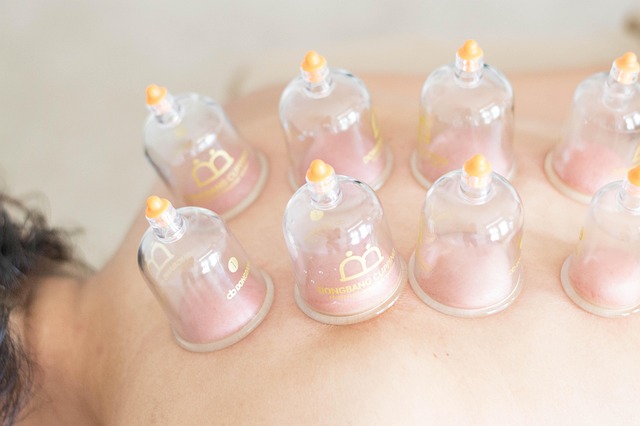Cold water immersion (CWI) is a popular recovery method for athletes, offering reduced muscle soreness, inflammation, and fatigue through its physiological effects on blood vessel constriction and dilation. The shock of cold water triggers endorphin release, reducing pain perception and promoting relaxation. For athletes, CWI aids in rapid recovery, reduces muscle inflammation, improves circulation, and enhances performance. Additionally, mindfulness practices during CWI can improve mental well-being. Safety measures include checking water temperature, limiting sessions to 20 minutes, consulting healthcare providers, and dressing warmly post-immersion with light stretching.
“Unwind, rejuvenate, and unlock your full potential with a refreshing approach to stress reduction—cold water therapy. This article explores the powerful practice of cold water immersion, specifically tailored for athletes seeking an edge in performance and recovery. From understanding the safe practices of cold water immersion to uncovering the science behind its stress-relieving and mindfulness benefits, we delve into how this ancient technique can be a modern game-changer for athletic wellness.”
Understanding Cold Water Immersion: A Safe Practice for Athletes
Cold water immersion has gained popularity among athletes as a powerful tool for recovery and stress reduction. This practice involves submerging oneself in cold water, typically from an ice bath or cold shower, for a short duration. It is a safe and effective method that can aid in reducing muscle soreness, inflammation, and fatigue, making it especially beneficial for active individuals.
For athletes, cold water immersion offers several advantages. It helps improve blood circulation by constricting and then dilating blood vessels, which accelerates the removal of metabolic waste products from muscles. The shock of cold water also triggers a release of endorphins, often referred to as ‘feel-good’ hormones, that can reduce pain perception and promote relaxation. This practice is a game-changer for post-workout recovery, enabling athletes to quickly rejuvenate and prepare for their next training session.
The Science Behind Stress Reduction and Mindfulness through Cold Therapy
The science behind stress reduction and mindfulness through cold therapy reveals a fascinating interplay between our bodies and minds. Cold water immersion, such as that experienced during cold showers or baths, triggers a cascade of physiological responses. These include the release of endorphins, often referred to as “feel-good” hormones, which can reduce pain perception and induce a sense of calm and well-being. Additionally, cold therapy stimulates the vagus nerve, a key component of our parasympathetic nervous system responsible for promoting relaxation and restoring balance in the body.
For athletes, cold water immersion offers a unique advantage. It aids in rapid recovery by reducing muscle inflammation and improving circulation, enhancing performance in subsequent training sessions. The mind-body connection is further strengthened as mindfulness practices, such as focusing on the sensory experience of cold water, can help individuals cultivate present-moment awareness and reduce rumination, a common stressor in high-performance environments. Thus, integrating cold water therapy into routine wellness practices can be a powerful tool for athletes to not only manage stress but also enhance overall mental and physical well-being.
Benefits of Cold Water Immersions for Athletic Performance and Recovery
Cold water immersions have gained significant attention in the athletic community as a powerful tool for performance enhancement and recovery. This therapy involves submerging oneself in cold water, typically below 59°F (15°C), for a specified period. For athletes, it offers numerous advantages. One of the key benefits is its ability to reduce muscle soreness and inflammation post-exercise. The cold temperature constricts blood vessels, limiting blood flow to the affected areas, which can decrease swelling and pain. This process is particularly beneficial for intense training sessions or competitive events where delayed onset muscle soreness (DOMS) is common.
Additionally, cold water immersion promotes faster recovery by increasing blood flow once the body re-warms. It stimulates the release of endorphins, often referred to as ‘feel-good’ hormones, which can reduce stress and improve overall well-being. This aspect is crucial for athletes who need to maintain mental focus and resilience throughout their training regimens. Moreover, regular cold water immersions may enhance athletic performance by improving circulation and oxygen delivery to muscles, ensuring they are efficiently fueled during intense activities.
Incorporating Cold Water Therapy into Your Routine: Tips and Precautions
Incorporating cold water therapy into your routine can be a game-changer for stress reduction and mindfulness, especially for athletes looking to enhance recovery. Cold water immersion, such as taking a cold shower or immersing yourself in an ice bath, triggers a series of physiological responses that can calm your nervous system. Start with shorter durations—around 10-30 seconds—and gradually increase the time as you build tolerance.
To ensure safety and maximize benefits, set clear boundaries. Always check the water temperature beforehand to avoid hypothermia. Never stay in cold water for more than 20 minutes at a time. If you have any medical conditions or are pregnant, consult your healthcare provider before trying cold water therapy. After the immersion, dress warmly to maintain body heat and consider stretching to promote circulation.
Cold water immersion has emerged as a powerful tool for athletes seeking an edge in performance and recovery. By understanding the science behind its stress-reducing and mindfulness benefits, athletes can safely incorporate this practice into their routines. Whether enhancing athletic performance or aiding recovery, cold water therapy offers a natural and effective approach to wellness, allowing folks to harness the power of this simple yet transformative technique.
